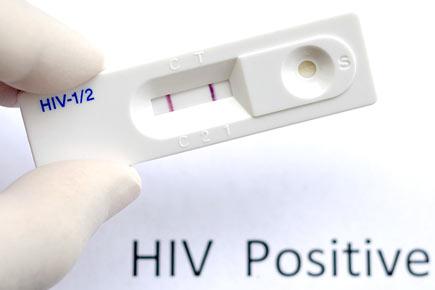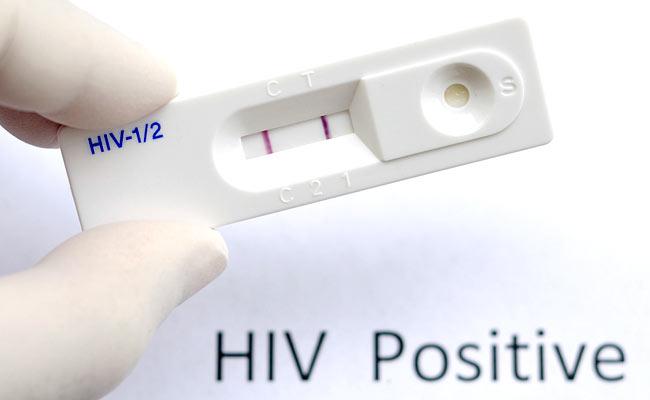India has the third-highest number of people living with HIV in the world with 2.1 million Indians accounting for about four out of 10 people infected with the deadly virus in the Asia-Pacific region, according to a UN report

United Nations: India has the third-highest number of people living with HIV in the world with 2.1 million Indians accounting for about four out of 10 people infected with the deadly virus in the Asia-Pacific region, according to a UN report.
The report by UNAIDS, the United Nations programme on HIV/AIDS, said that 19 million of the 35 million people living with the virus globally do not know their HIV-positive status and so ending the AIDS epidemic by 2030 will require smart scale-up to close the gap.
ADVERTISEMENT
The first-ever UNAIDS 'Gap Report' said after sub-Saharan Africa, the region with the largest number of people living with HIV is Asia and the Pacific. At the end of 2013, there were an estimated 4.8 million people living with HIV across the region.

Representational picture
Six countries -- China, India, Indonesia, Myanmar, Thailand, and Vietnam - account for more than 90 per cent of the people living with HIV in the region.
"India has the third largest number of people living with HIV in the world 2.1 million at the end of 2013 and accounts for about 4 out of 10 people living with HIV in the region," the report said. It said HIV treatment coverage is only 36 per cent in India, where 51 per cent of AIDS-related deaths occur.
The report said new HIV infections in South and South-East Asia declined by 8 per cent and by 16 per cent in the Pacific between 2005 and 2013. In India, the numbers of new HIV infections declined by 19 per cent, yet it still accounted for 38 per cent of all new HIV infections in the region.
The proportions of people who do not have access to antiretroviral therapy treatment are 64 per cent in India. In Asia and the Pacific, the number of AIDS-related deaths fell by 37 per cent between 2005 and 2013, the report said.
India recorded a 38 per cent decline in AIDS-related deaths between 2005 and 2013. During this period, there was a major scale up of access to HIV treatment, it said. At the end of 2013, more than 700,000 people were on antiretroviral therapy, the second largest number of people on treatment in any single country.
In India, HIV prevalence among female sex workers dropped from 10.3 per cent to 2.7 per cent but it increased in the states of Assam, Bihar and Madhya Pradesh, the report said.
The estimated population size of sex workers is 868,000, of which 2.8 per cent is HIV-positive. In India, HIV prevalence among women who inject drugs was nearly twice that or more than the figures for their male counterparts, it said.
HIV prevalence among people who have migrated from rural to urban areas in India is estimated at 0.9 per cent, almost four times the national prevalence, according to the UN report.
"Whether you live or die should not depend on access to an HIV test," said Michel Sidibe, Executive Director of UNAIDS.
"Smarter scale-up is needed to close the gap between people who know their HIV status and people who don't, people who can get services and people who can't and people who are protected and people who are punished," he said.
The UNAIDS report shows that as people find out their HIV-positive status they will seek life-saving treatment. In sub-Saharan Africa, almost 90 per cent of people who tested positive for HIV went on to access antiretroviral therapy (ART), the report said.
In 2013, an additional 2.3 million people gained access to the life-saving medicines, bringing the global number of people accessing ART to nearly 13 million by the end of 2013, it said.
"If we accelerate all HIV scale-up by 2020, we will be on track to end the epidemic by 2030," Sidibe said. "If not, we risk significantly increasing the time it would take, adding a decade, if not more," he said.
By ending the epidemic by 2030, the world would avert 18 million new HIV infections and 11.2 million AIDS-related deaths between 2013 and 2030.
UNAIDS reported the lowest levels of new HIV infections this century, at 2.1 million. In the last three years alone, new HIV infections have fallen by 13 per cent. It is estimated that 35 million people were living with HIV in the world at the end of 2013. AIDS-related deaths are at their lowest since the peak in 2005, having declined by 35 per cent.
Tuberculosis continues to be the leading cause of death among people living with HIV. The report outlines that to close the gap between people who are reached with HIV services and people who are not will require research and innovation combined with protective laws that promote freedom and equality for all people.
"It will also require increased commitment from the global community and countries most affected to the remarkable returns on investment that have been witnessed over the last 10 years to continue so that the end of the AIDS epidemic can be achieved by 2030," the report said.
 Subscribe today by clicking the link and stay updated with the latest news!" Click here!
Subscribe today by clicking the link and stay updated with the latest news!" Click here!







